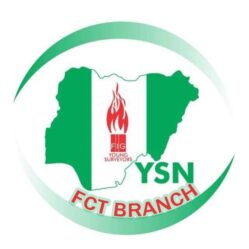Hello, Surveyors! Today, we’re exploring a vital aspect of our profession: Safety Protocols in Surveying. Safety is not just about wearing the right gear; it’s a mindset and a commitment to protecting yourself, your team, and the public. Let’s go into the essentials of safety in Surveying and discover how we can all make the field a safer place to work.
Understanding Safety in Surveying: Why It Matters
Surveying often involves working in diverse environments—from busy urban streets to remote rural areas, and each setting has its unique risks. Understanding safety protocols helps prevent accidents, reduces liability, and ensures projects run smoothly.
Did you know? According to industry statistics, the majority of accidents in Surveying are due to slips, trips, and falls, often caused by uneven terrain or inadequate footwear. This highlights the importance of being vigilant and properly equipped at all times.
Key Safety Protocols Every Surveyor Should Know
- Personal Protective Equipment (PPE)
-Hard Hats: Essential for protecting against falling objects.
-High-Visibility Clothing: Ensures you’re visible to others, especially in high-traffic areas.
-Steel-Toed Boots: Protects from sharp objects and uneven surfaces.
-Safety Glasses: Shield eyes from debris and other hazards.
Quick Tip: Always check your PPE before use to ensure it’s in good condition!
- Site Assessment and Hazard Identification
-Conduct a thorough site assessment before starting any work. Look for potential hazards such as unstable ground, overhead power lines, or dangerous wildlife.
-Use checklists to ensure a comprehensive evaluation. Identifying hazards before they become problems is crucial!
- Equipment Safety
-Regularly inspect all Surveying equipment to ensure it’s in good working order. Faulty equipment can lead to serious accidents.
-Properly calibrate instruments to avoid errors and ensure accurate results, reducing the need for risky repeat work.
- Environmental Awareness
-Be mindful of weather conditions. Surveying in extreme heat or cold presents additional risks, such as heat stroke or frostbite.
-Stay aware of local wildlife and plants that could pose threats, like poisonous plants or aggressive animals.
- Communication is Key
-Maintain clear communication with your team members. Use radios or mobile phones to stay in contact, especially in large or challenging terrains.
-Establish and practice emergency procedures so everyone knows who to contact and what actions to take in an emergency.
- Proper Training and Continuous Learning
-Ensure all team members are well-trained in both Surveying techniques and safety protocols.
-Engage in regular safety drills and training sessions to keep your skills and knowledge up to date.
Real-Life Scenarios and Engagement
Understanding these protocols is one thing, but applying them in real-life situations is crucial. Next week, we’ll be diving into real-life scenarios where these safety protocols come into play. We’ll discuss how to handle specific challenges and share experiences from the field.
As we wrap up, think about your own experiences in the field. Reflect on these questions:
-Have you encountered any specific hazards in your Surveying work?
-How did you address them?
-What are some of the best practices you follow to ensure safety on-site?
Feel free to share your thoughts and experiences with us! Your insights can help others learn and stay safe.
ysnfctabuja@gmail.com
Remember, safety is not just a set of rules; it’s a shared commitment. Let’s continue to priorities safety in every project and make our Surveying practices as safe as they are effective.
To learn more you can visit some of these links.
https://www.fdot.gov/docs/default-source/geospatial/documentsandpubs/surveysafetyhandbook.pdf
https://www.secoprecision.com/post/surveyor-safety-is-job-1
Thank you for joining us today. Stay tuned for next week’s discussion on real-life scenarios, and keep focusing on safety in all your surveying activities!
Signed ✍ :
- Surv. Uju O. IZUEGBU, MNIS
Chair: YSN-FCT
- Surv. Angela Omamuyovwi ANYAKORA, MNIS
Head: Education Committee YSN-FCT


